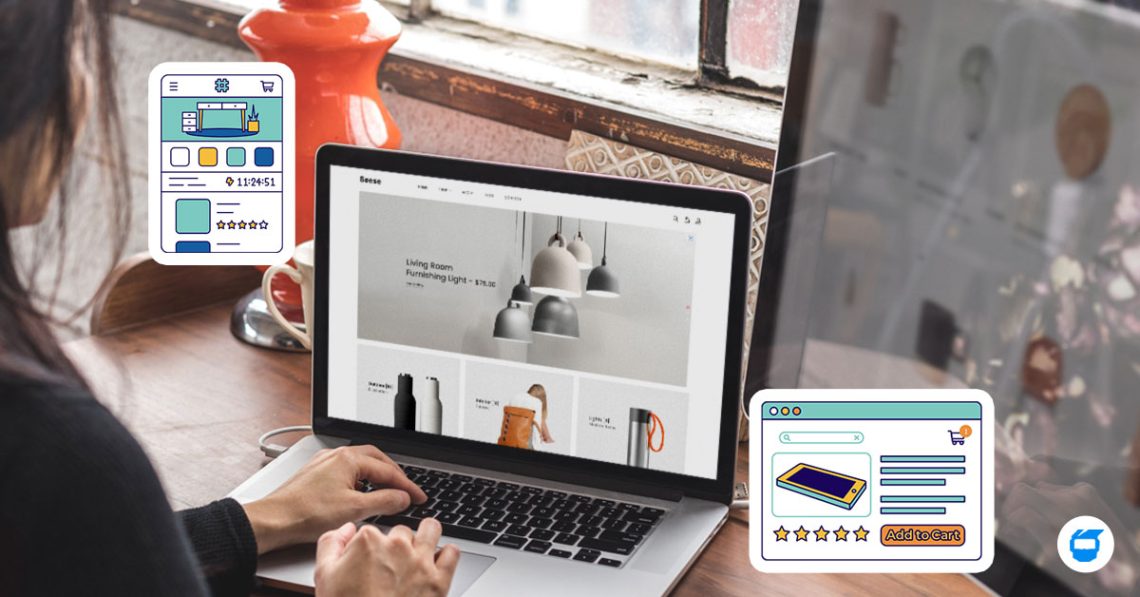Staying ahead of the curve is crucial to attracting and retaining customers in the fast-paced digital world. At the same time, it’s also pivotal for online stores to go with the trends. So with that, let’s dive into the top ecommerce website design trends for 2025 to ensure your online store not only meets, but also exceeds user expectations.
Related: What is an Ecommerce Website? A Guide to What You Need to Know

Table of Contents
- Minimalist Interfaces for Maximum Impact
- Mobile-First Design for Seamless Shopping
- Fast and Secure Checkout Processes
- Personalization for the Win
- Social Commerce Integration
- Augmented Reality (AR) Integration
- Artificial Intelligence (AI) for Personalized Recommendations
- Microinteractions for Enhanced User Engagement
- Inclusive Design for a Diverse User Base
1. Minimalist Interfaces for Maximum Impact
Gone are the days of cluttered web pages. Clean and minimalist designs are taking center stage in 2025. A clutter-free interface not only enhances the visual appeal of your online store, but also improves user navigation. Think ample white spaces, concise product descriptions, and strategic placement of high-quality visuals. Keep it simple, and let your products shine.
Related: Creating a Clean and Minimalist Web Design: A Step-by-Step Guide
2. Mobile-First Design for Seamless Shopping
With the majority of users accessing ecommerce sites via mobile devices, a mobile-first design approach is non-negotiable. Make sure that your website is not just responsive but optimized for mobile users. This includes fast-loading pages, easy navigation, and a streamlined checkout process. Mobile-friendly design isn’t just a trend; it’s a necessity for success in ecommerce.
Related: What is Mobile Web Development? The Ultimate Beginner’s Guide
3. Fast and Secure Checkout Processes
A seamless checkout experience remains one of the top priorities for ecommerce websites. It’s best to reduce friction in the checkout process. Implement one-page checkouts, offer multiple payment options, and see to it that your site is equipped with the latest security measures to build trust with your customers.
4. Personalization for the Win
Tailoring the online shopping experience to individual preferences is a trend that continues to gain momentum. That’s why leveraging user data to provide personalized product recommendations, create user-specific landing pages, and offer a more customized journey through your ecommerce site is advisable. The more personalized the experience, the higher the chances of conversion.
5. Social Commerce Integration
Social media platforms continue to be influential in the ecommerce landscape. That’s why leveraging social commerce by integrating direct shopping features into your social media profiles is essential. This seamless connection between social platforms and your ecommerce site can boost brand visibility and drive sales.
6. Augmented Reality (AR) Integration
Taking the immersive experience a step further, AR integration is gaining popularity in ecommerce. Allow customers to virtually try on products or visualize them in their living spaces using AR. This not only adds a fun element to the shopping process, but also reduces the likelihood of returns by providing a more accurate representation of products.
7. Artificial Intelligence (AI) for Personalized Recommendations
Harness the power of AI to analyze customer behavior and provide tailored product recommendations. You can implement chatbots or recommendation engines that dynamically suggest products based on browsing history, purchase patterns, and user preferences. Doing so improves the user experience and at the same time, boosts cross-selling and upselling opportunities.
8. Microinteractions for Enhanced User Engagement
Microinteractions, the subtle animations and feedback mechanisms that respond to user actions, are gaining prominence in 2025. These small yet meaningful design elements can significantly enhance user engagement. Imagine a button that subtly changes color when hovered over or a notification that gently fades in – these microinteractions contribute to a more interactive and enjoyable user experience.
Related: Enhancing User Experience with Microinteractions and Animations in Web Design
9. Inclusive and Accessible Design for a Diverse User Base
Inclusive and accessible design in ecommerce remains crucial in 2025 because it welcomes all users, regardless of abilities. It ensures that everyone can easily navigate, understand, and engage with your online store. By prioritizing inclusivity, you are able to provide a better experience for diverse customers and open your business to a broader audience, establishing loyalty and trust.
Related: What is Inclusive Web Design? Understanding Its Basics
Evolving with the trends is essential to creating a visually stunning and user-friendly ecommerce website in 2025. Keep experimenting, stay user-focused, and watch your ecommerce business thrive with a cutting-edge design that captivates your audience.
Do you need help with the ecommerce website development of your business? Contact us today, and we’ll be glad to help you!

